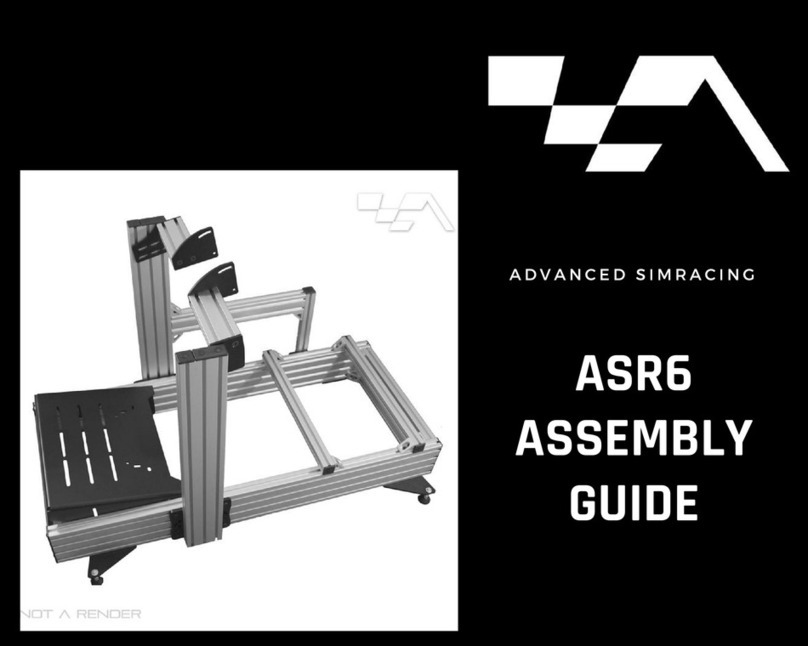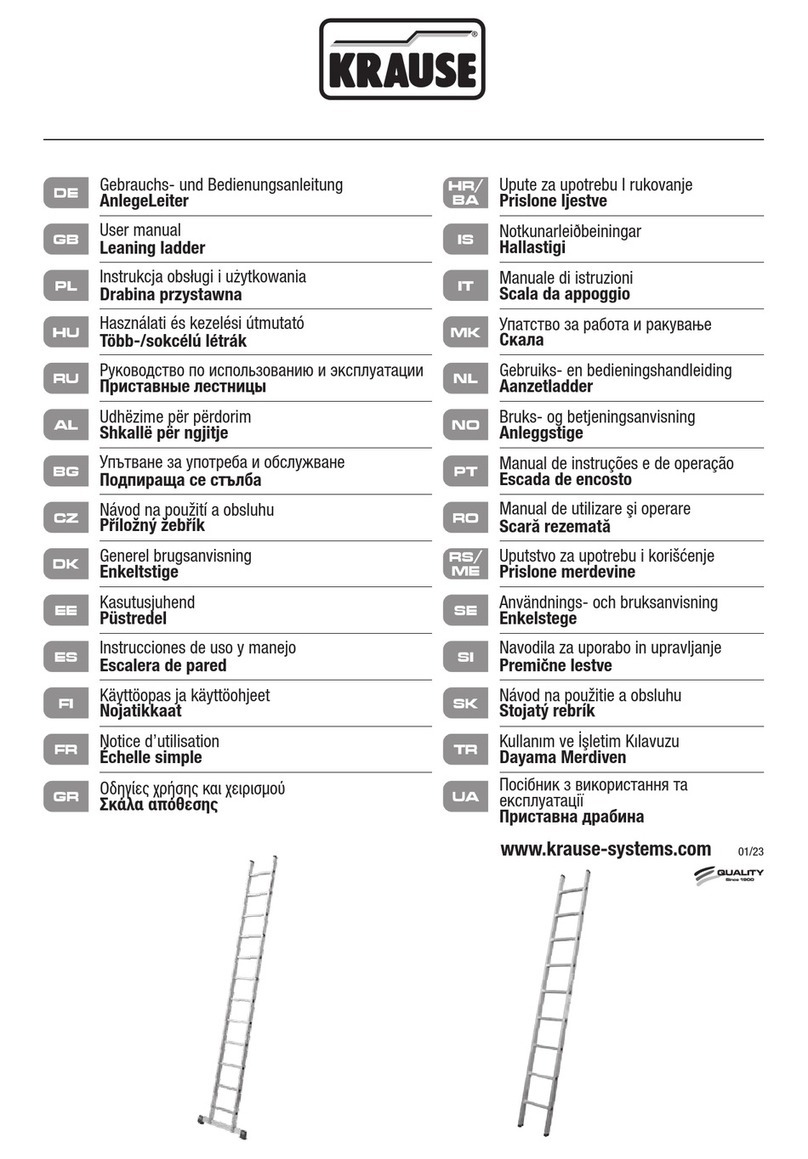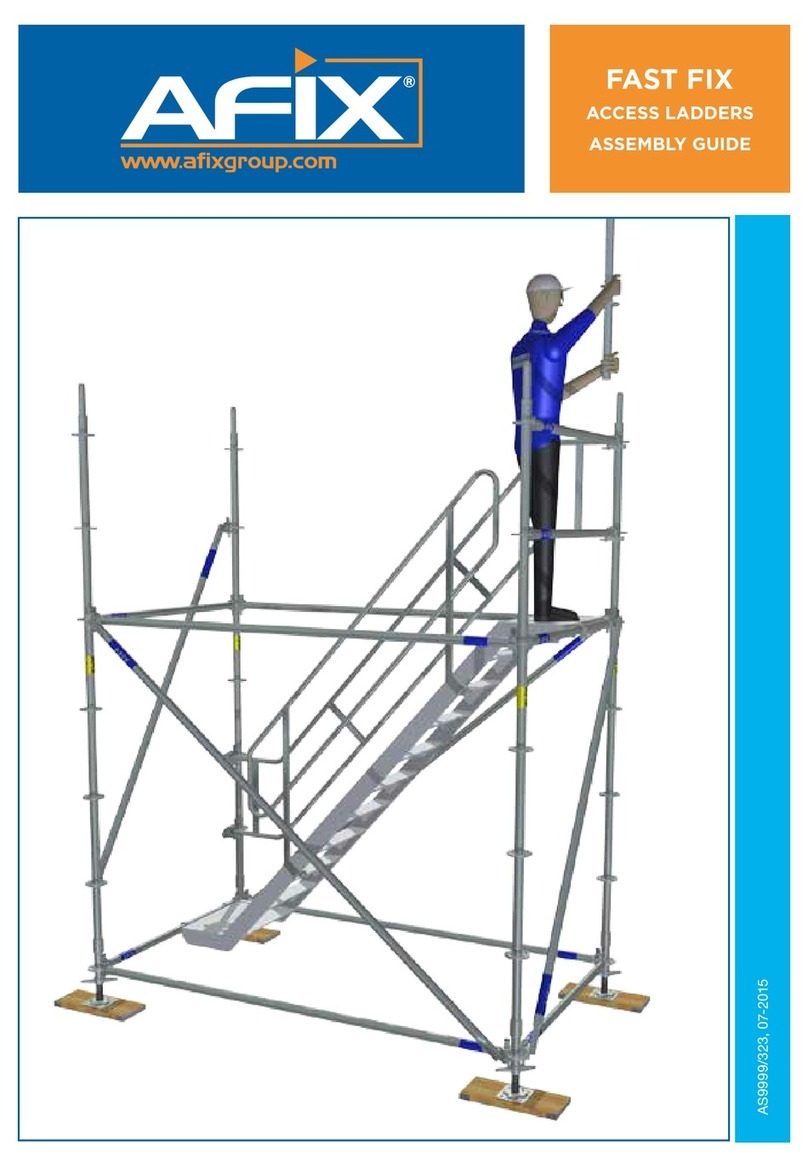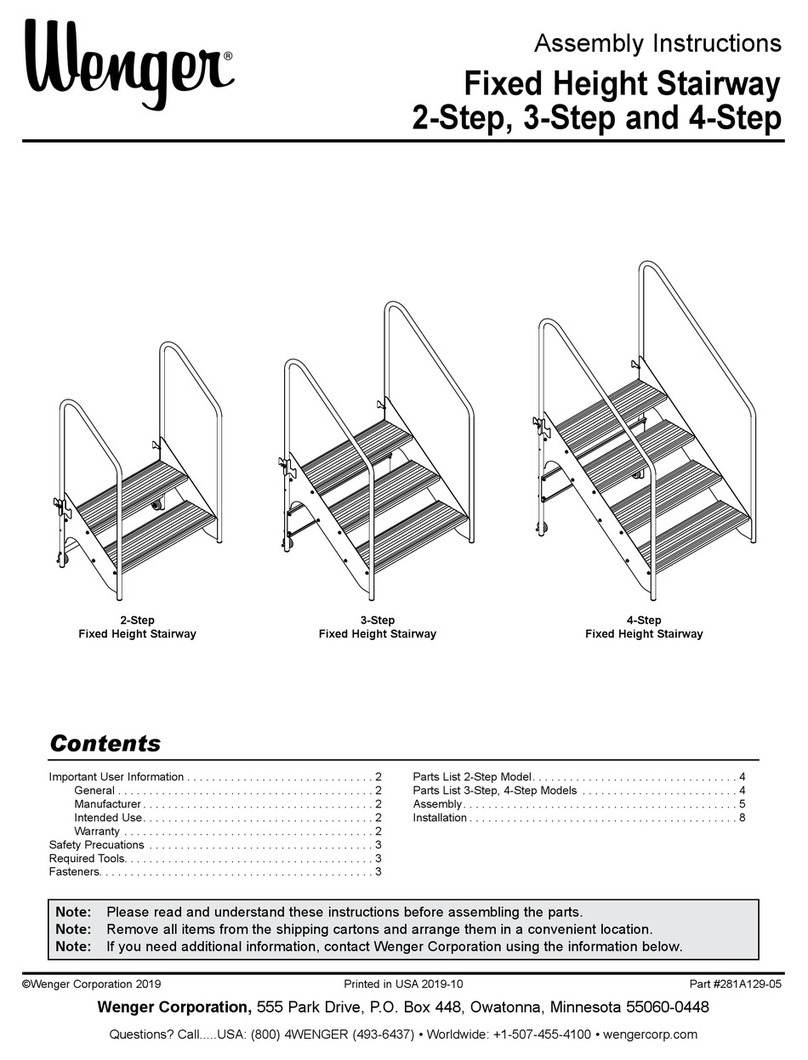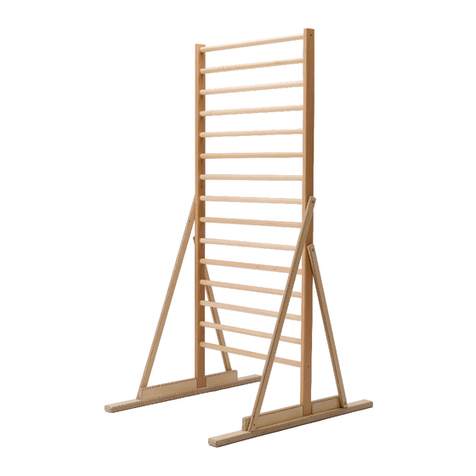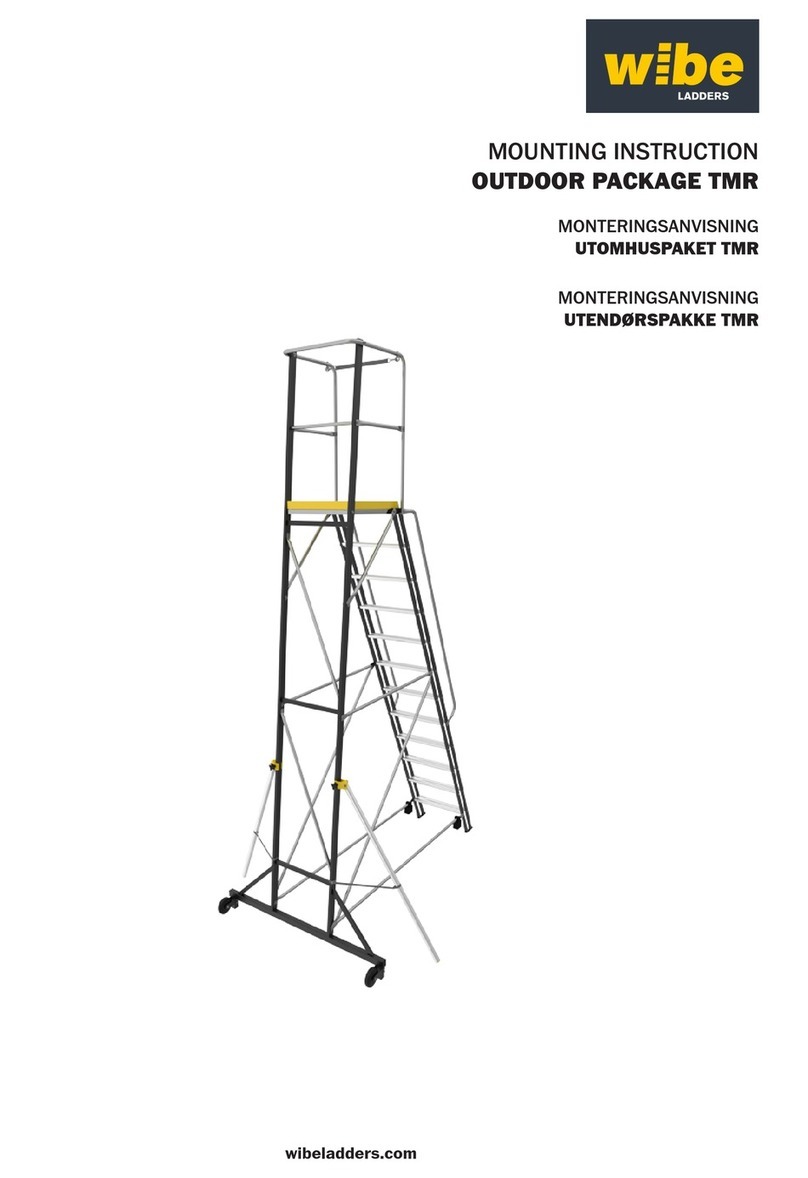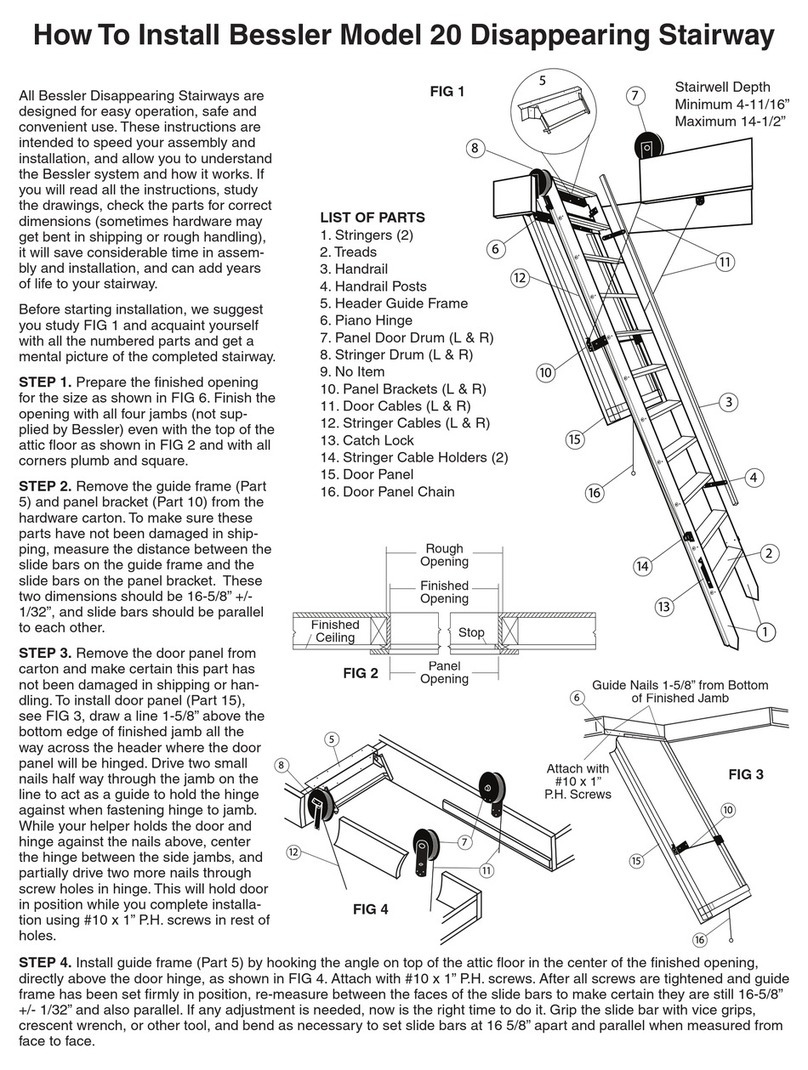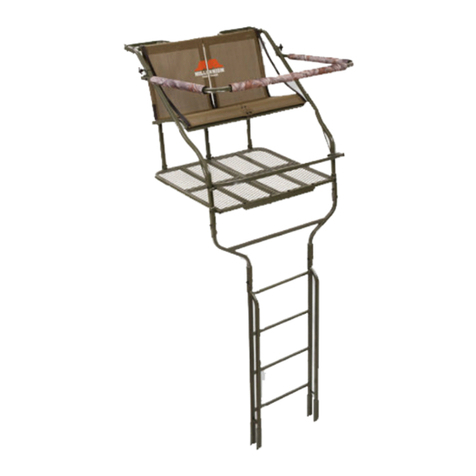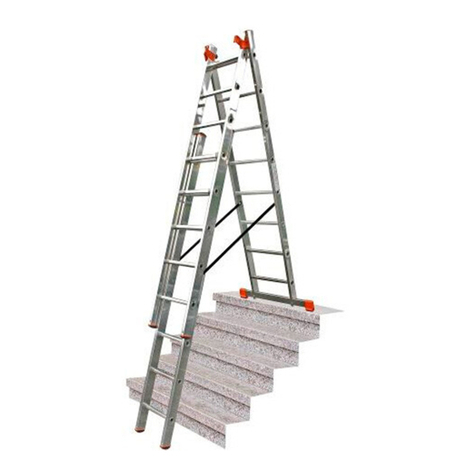
• The ladder must be dimensioned so that the topmost rung is
located ± 100 mm above the eaves or other access platform.
The bottom rung must be located 1,000–1,200 mm above the
ground or other departure surface.
INSTALLATION
Distance to the bottom
rung: 1,000–1,200 mm
Maximum distance between the pairs
of wall ladder legs: 3,000 mm
Minimum distance between
the rung and the nearest
protrusion: 200 mm
200,0-1200,0
NOTE! If a safety rail is fastened
to the ladder, at least four pairs
of wall ladder legs must be used!
• The wall ladder legs must be dimensioned so that the distance
between the center line of the ladder’s rungs and the eaves or
other protrusion is at least 200 mm. The legs are to be shortened
to a suitable length, if necessary. The wall ladder legs must be
fastened to the wall material with the aid of a suitable fastening
method. While fastening the ladder, measures must be taken to
prevent water trickling down the wall from entering the wall
structures by, e.g., sealing the seams between the cladding and
brackets.
• The wall ladder legs must be fastened to the ladder with wall
ladder clips so that the topmost pair of legs is located as close to
the eaves as possible and the bottom pair of legs is located
between the first and second rung. Efforts must be made to
always fasten the wall ladder legs to the load-bearing structures of
the wall. In the case of brick-cladded houses, it is advisable to
install the wall ladder legs in the frame structure before bricklaying.
The maximum distance between the pairs of wall ladder legs is
3,000 mm. The wall ladder clips are fastened with two M8x16
screws and one M8x40 screw.
• The wall ladder legs are fastened to the eaves structure with the
aid of eaves supports. Eaves supports are to be used when the
length of the wall ladder legs exceeds 400 mm. The purpose of
the eaves supports is to support the ladder during vertical loading.
The eaves support is fastened to the wall ladder leg with an
M8x30 screw and to the eaves with a 7x50 self-tapping flange
screw.
2 x
7 x 50 SCREW
Timber frame or
paneled wall:
2 x 7x50 self-tapping
flange screw
Methods for fastening wall ladder legs to different materials:
Concrete/stone/block wall:
nylon or metal plug
suitable for the material in
question + 4 x 7x50
self-tapping flange screw
Sandwich panel:
separate mounting plate

